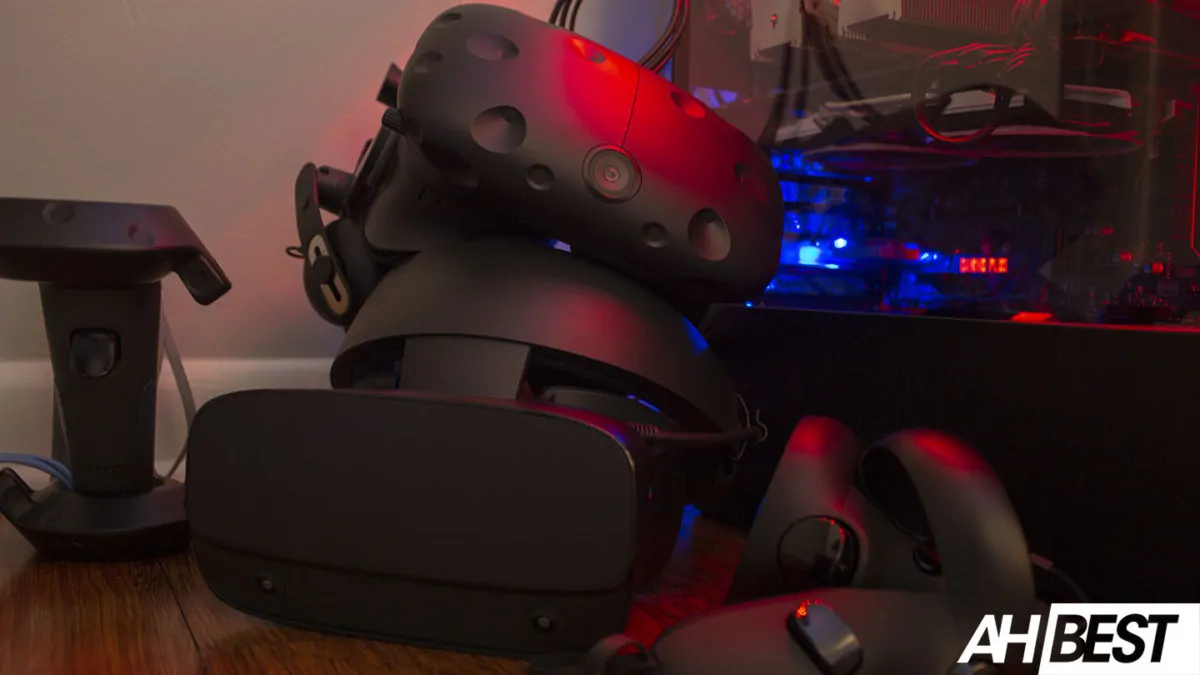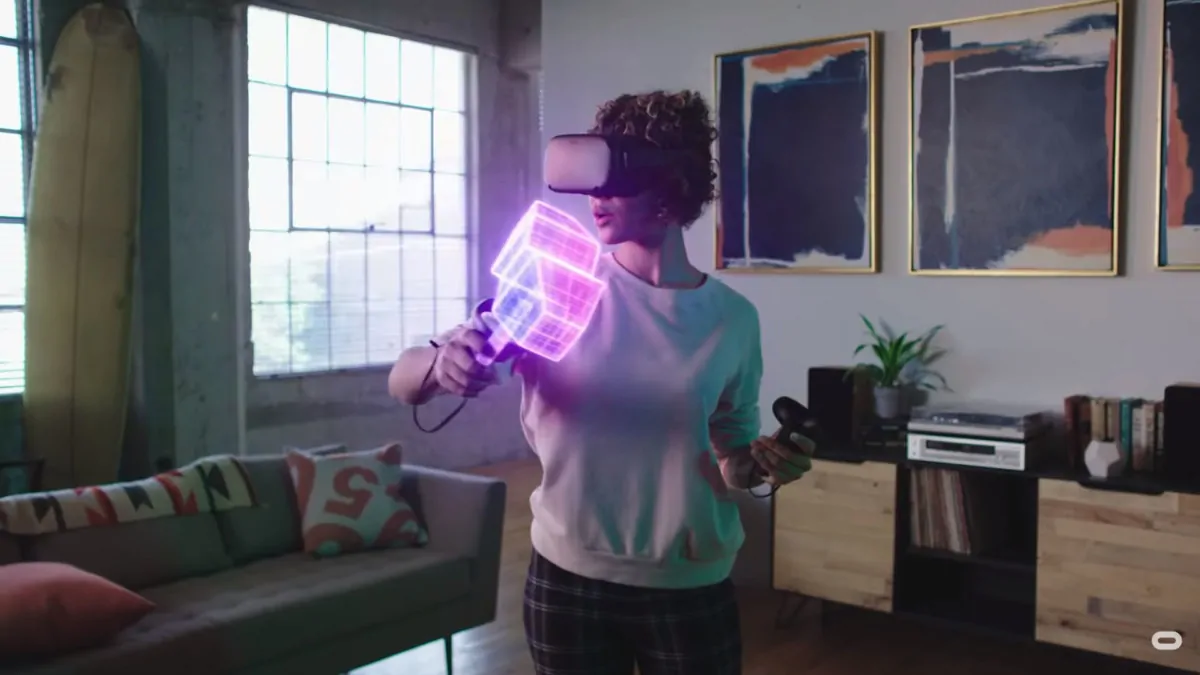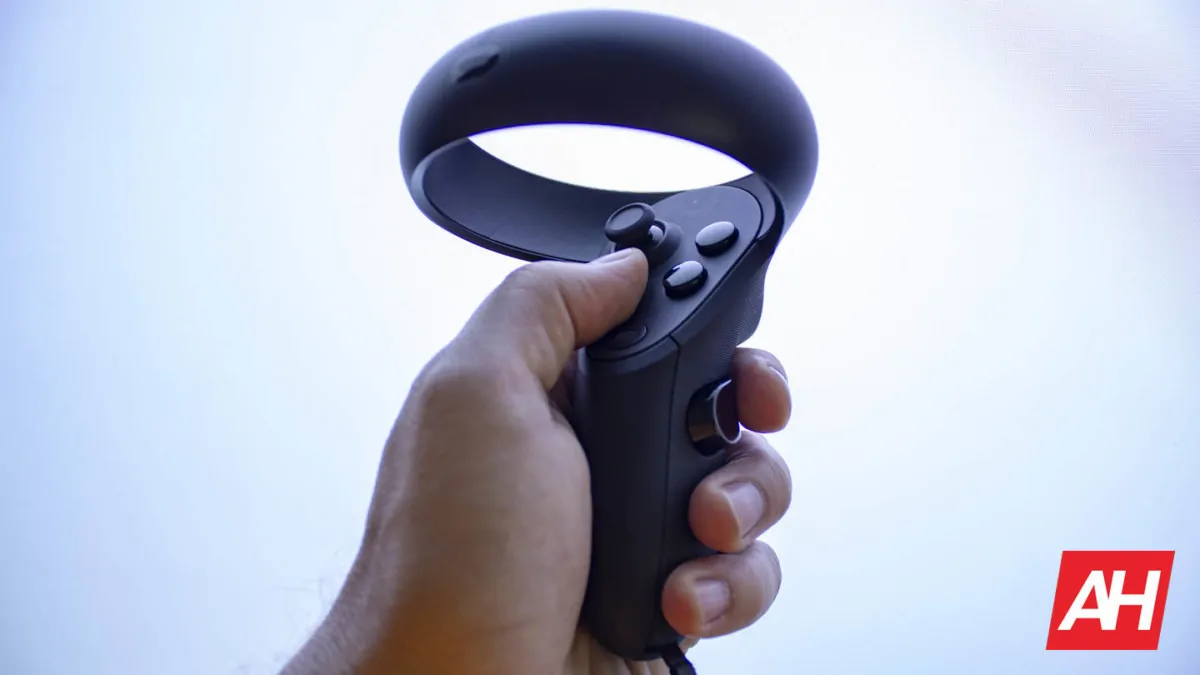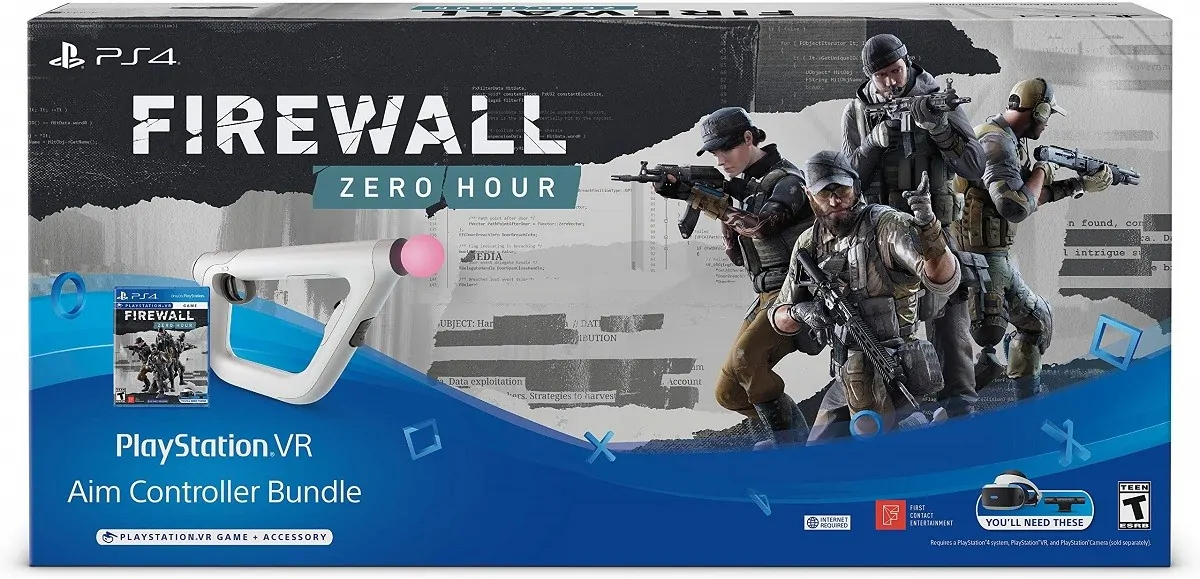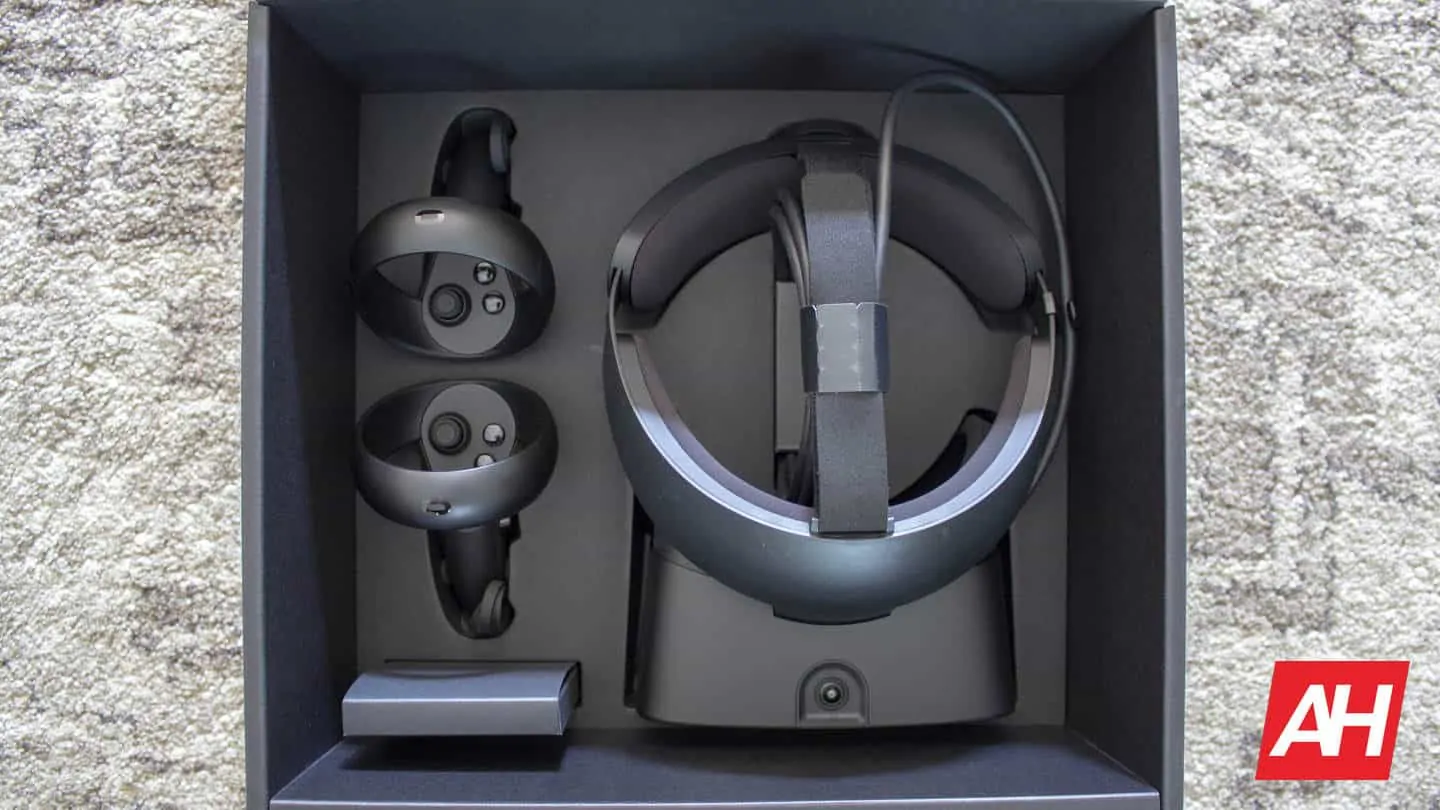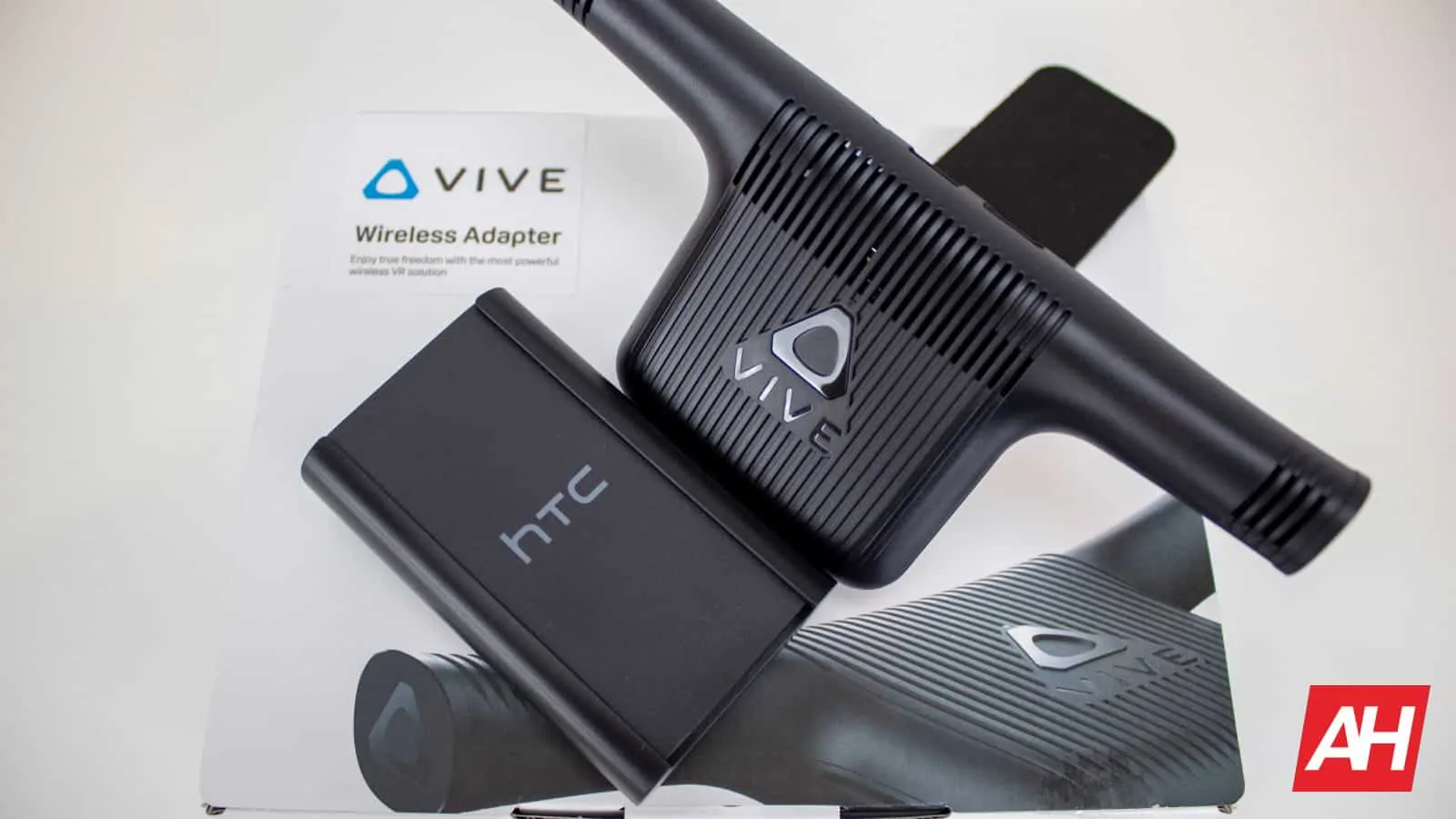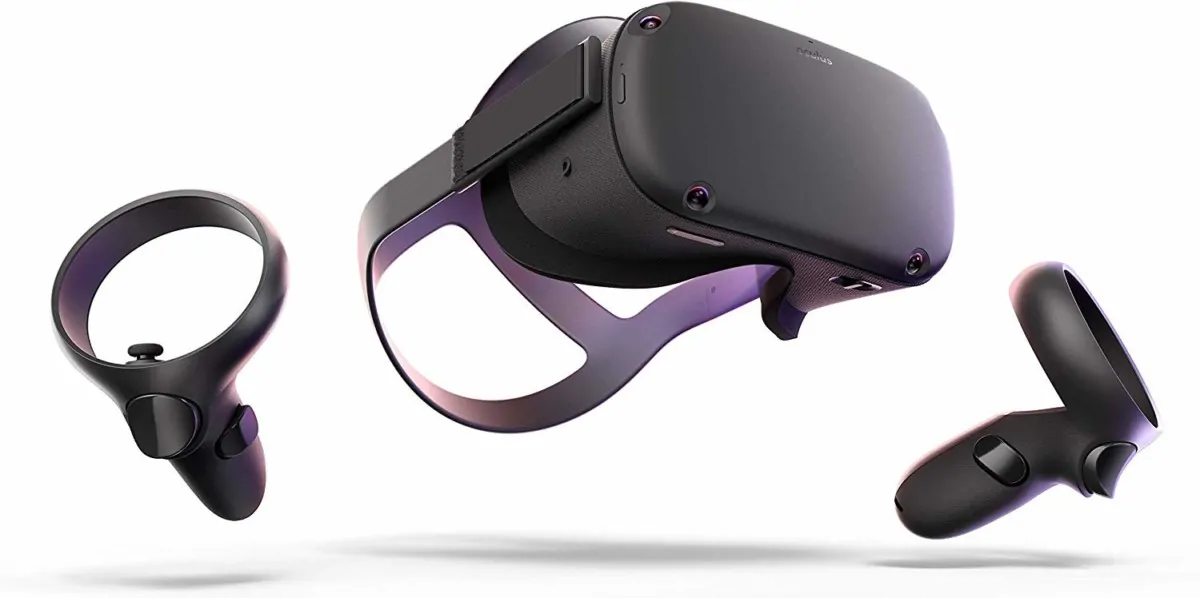It’s pretty easy to stay inside when it’s so darn hot outside, and what better way to experience other worlds than through a VR headset? 2019 has been an amazing year for VR, with the release of three big-name headsets in the last 2 months alone. That’s the biggest change the VR landscape has seen in years, and it significantly alters the choice of what headset is going to be best for each individual person.
But the choice of “best” isn’t quite so cut an dry as it is in other markets. Each VR head-mounted display, or HMD for short, is developed with a primary purpose in mind and will fit different users’ needs as a result. We’re going to break down these needs into different categories and award a winning HMD to each, which should make buying your next (or first) VR HMD a crystal clear decision.
Best Value VR HMD – Oculus Quest
At $399, the Oculus Quest requires absolutely nothing else to deliver a stellar VR experience that’s unparalleled in its execution. While headsets like the Oculus Rift and the Playstation VR are less expensive than the Quest, the Oculus Rift requires an expensive, beefy PC to power it and the Playstation VR requires a Playstation 4 to power it. Both of those requirements place it several hundred dollars over what a Quest can offer, and the Quest also offers the ability to play roomscale VR content that the PS VR can’t.
As a true VR console, the Oculus Quest is the first VR system of its kind that simultaneously delivers a true roomscale experience and also doesn’t require anything else to power it. Oculus has the substantial financial backing of Facebook behind it, and while I personally was very wary of Facebook’s entry into the VR market some years ago, the company has proven their worth by funding dozens of games and stories, none of which would likely be around if they hadn’t thrown their financial weight into said projects.
With their backing and the incredible developer support we’ve seen thus far on the Quest, it’s clear the system’s amazing launch has provided a platform that won’t be collecting dust in homes anytime soon. The Oculus Store’s easy interface and a wealth of affordable, quality titles, as well as dozens of incredible upcoming games, means you’ll have plenty to experience all year long.
It’s also, surprisingly, got some incredible mod support that looks to be just almost as good as what a PC can offer, and considerably more so than what a console ever could. Beat Saber is an excellent example of this, and being able to sideload games like Minecraft VR, which wasn’t even built for the platform specifically, shows what incredible potential this system has and how $400 is a truly fantastic price for this one-stop-shop HMD.
Oculus Quest - Amazon.comBest Way to Start – Oculus Quest
While we gushed about the value of the Quest above, it’s also well worth noting that this is the absolute best headset to get started with if you don’t already have money invested in any kind of VR hardware or software. As a totally standalone unit, the Quest requires nothing to get started and doesn’t have any accessories or expensive add-ons to make the experience better. All you need to do is buy the system and play.
It’s also been receiving significant updates since its release in May, as well as plenty of developer support with interesting new titles and software. A recent update fixed tracking issues that were present at launch, and that same update also added Bluetooth keyboard functionality, which pairs perfectly with that Firefox Reality browser that just launched on the system as well. It’s a one-stop-shop system and offers an unbelievable amount of content that can be experienced with very little setup and effort.
Runner-up: Playstation VR
Not every category has a runner-up, but the second-best way to get going with VR is specifically reserved for Playstation 4 owners. For about $250 you can get a Playstation VR bundle with 2 games, and $350 will bring you into the full package with the Playstation Move controllers and 2 games. PS4 owners will find this to be the least expensive and also the easiest way to get started with the best of VR gaming, as Sony’s library of VR titles includes amazing first and third party games with plenty of experiences that you cannot get anywhere else.
Sony’s support with VR content is only rivaled by Oculus, and their first-party studios have garnered the praise of both critics and consumers alike, bringing plenty of AAA quality titles to the VR market.
Best Exclusives – Playstation VR
This section is particularly difficult to determine, simply because both Sony and Oculus have poured a considerable amount of money into creating exclusive VR content over the past 2-3 years. Both companies have pumped out a respectable number of games that are exclusive to their platforms, but Sony’s titles edge out Oculus just a bit.
Games like Astro Bot: Rescue Mission and Firewall: Zero Hour have made headlines as system-sellers for the PS VR for very good reason. Both of these titles deliver compelling gameplay that’s only possible in VR and make sense the moment you put the headset on. They also deliver completely unique gameplay experiences that you can’t get anywhere else. Other titles like Deracine or Resident Evil VII deliver believable worlds, characters, and stories that just feel right in VR and will make you wonder how they could possibly be enjoyed any other way.
Winners like Iron Man VR and Blood & Truth show that Sony still has plenty of heavy-hitters in the wings for the PS VR, even as the PS4 nears the end of its life. Sony has even announced that its current-generation Playstation VR headset will work with the upcoming next-generation Playstation (probably called the Playstation 5). This bodes very well for the future of VR on Sony’s consoles and proves that buying a PS VR headset now will still deliver incredible content for years to come.
PlayStation VR Bundle - Amazon.comRunner Up – Oculus Rift
Oculus seems to be readying some serious punches for the future of VR, including that Splinter Cell and Assassin’s Creed VR games we’ve always wanted to experience in VR. Sony might have the slight edge right now, but the future looks like it may be brighter than ever in Oculus’ court.
As a word of note, no Oculus game is “truly” exclusive to Oculus headsets on a PC, as tools like ReVive allow Oculus games to be played on other headsets too. The issues typically manifest in issues with controlling the game, as all VR headsets have different controller designs and not everything translates 1-to-1 across all controllers.
Easiest Setup on PC – Oculus Rift S
When the Oculus Rift S was announced, some scratched their heads at the side-stepping Oculus made with its latest HMD. While it has worse headphones and a less comfortable headstrap than the regular Oculus Rift, the choice of an inside-out tracking system has proven to be a considerably easier way to get going than the external Constellation camera system from the original Rift.
The original Rift’s system of multiple cameras caused quite a headache for lots of people. USB problems with certain types of motherboards or port speeds, the fact that each camera needs its own port in addition to the headset, and just the headache of getting cords to route around a room or through walls is really just too much to ask for in many cases. The Rift S does away with all of this by placing 5 cameras on the HMD itself, requiring only a single USB 3.0 port and a DisplayPort.
The Rift S’s tracking system felt a bit on the beta side when it launched, with controllers losing tracking if they got too close to a user’s face. Just over a month after launch, Oculus issued a big firmware update on its beta channel that seemingly miraculously fixed these issues and have made it almost indistinguishable from the original Rift’s tracking system.
Not having to install lots of sensors and make sure you’ve got enough compatible USB ports is a blessing in and of itself, but the simple setup to get a proper roomscale experience is really where the advantage comes in. Losing the need to mount cameras on walls or find a way to hide the ugly wires is a huge benefit for homeowners and renters alike, and may just provide the advantage needed for folks who aren’t comfortable or aren’t allowed to do these things.
Oculus Rift S - Amazon.comBest Wireless Experience – HTC Vive
I didn’t expect to give the 3+ year old HTC Vive any award on this list, but the fact that any HTC Vive HMD is capable of using the official HTC Wireless Adapter made it a viable option again. This adapter, released in Fall 2018, turns the HTC Vive and HTC Vive Pro into a brilliant wireless experience that offers the full power and clarity that only PC VR can. It’s not just HTC’s official adapter that works either, it’s also the original wireless accessory from TP-LINK, too.
Surprisingly, the Vive is the only pair of VR headsets capable of being wireless on a PC. Valve just launched their cutting-edge first-generation VR headset with the only option of plugging it in, and the Oculus Rift S that launched in May 2019 also suffers from the same issue. While the Valve Index has a planned wireless accessory of some kind coming in the future, there are no details and no release schedule for it which, in Valve time, means it may never even happen.
Oculus, too, has no official way to wirelessly connect your Oculus Rift or Oculus Rift S with a PC, making the Vive the single best way to wirelessly experience VR.
HTC Vive Wireless Adapter - Amazon.com HTC Vive - Amazon.comRunner-up: Oculus Quest
The Oculus Quest is an obvious choice for a wireless VR experience. The only reason it didn’t win boils down to two things: performance and content. But despite only being powered by a 2-year-old mobile chipset, the Oculus Quest has a very console-like aesthetic that keeps players from worrying about how much RAM it has or what to set the graphics options to. Instead, players just have to put the headset on and play. Nothing more.
It’s this ease of use that will eventually propel the Oculus Quest into the absolute best wireless headset money can buy in the VR world, especially once more games are released. Right now there are several dozen titles to get on the Quest and that number is only going to get significantly larger over the next several months and years. Sales of the Quest have been incredible, and the support for it from developers paint an amazing picture of a product that will continue to improve over time and become an easy recommendation for the foreseeable future.
Best Visual and Audio Fidelity – HTC Vive Pro or Valve Index
This one is a bit of a tie because both headsets provide incredible video and audio fidelity, and they’ve both got strengths and weaknesses that counter-act each other. Both headsets feature an identical resolution of 1440 x 1600 per eye, which is significantly higher resolution than all first-generation HMDs and provide a truly clean picture with very little screen door effect. The difference comes in the underlying technology on each display, and it’s here where you’ll find personal preference is going to determine what headset to choose.
The Vive Pro utilizes an OLED display with a pentile pixel layout. This means pixels are laid out in a diamond configuration which, unfortunately, increases the screen door effect. It’s still not very noticeable at this resolution, but the Valve Index’s RGB pixel layout is going to win in this particular display quality category. If screen door effect of any kind drives you crazy, the Index will be a better choice.
The Valve Index has a considerably worse contrast ratio than the Vive Pro though, and it’s due to the fact that Valve is using an LCD.
This means blacks are going to look grey which, personally, drives me crazy. I love the perfect contrast ratio that OLEDs deliver and I’m willing to give up a tiny bit of clarity for the massive improvement in black levels and overall contrast, as it really just makes everything look so much better. When you’re playing something like Vader Immortal, for instance, which has lots of very dark areas, it’s distracting and problematic when everything in the shadows is hidden behind a veil of grey shadows that are supposed to be black, and it ruins immersion factor when characters are hiding just beyond that veil.
The area where the Index could clearly pull ahead is in refresh rate. At a maximum refresh rate of 144Hz, the Valve Index’s display is going to feel a lot smoother than the 90Hz display on the Vive Pro. The only reason this isn’t an immediate win is because it’s not exactly realistic to expect 144Hz to be an achievable refresh rate on most PCs when running at this resolution. The default 120Hz is more realistic and is still better than the 90Hz of the Vive Pro, but it’s still a difficult metric for most machines to render consistently, so while it’s a technical win on Valve’s part, it’s not something many people will even be able to fully enjoy.
On the audio side of things, both headsets have built-in headphones but go about the design in significantly different ways. The Vive Pro’s headphones are an on-the-ear type that delivers a fantastic range of audio, including deep bass and generally excellent overall quality. The Valve Index, on the other hand, has headphones that hover over your ears instead. There’s a bit of loss of fidelity, though, since the sound has to travel through open air before it gets to your ears.
The Index’s speakers will be more comfortable over time because they aren’t pressing against your ears, but the Vive Pro will deliver better overall quality.
HTC Vive Pro - Amazon.com Valve Index - Steam Store
